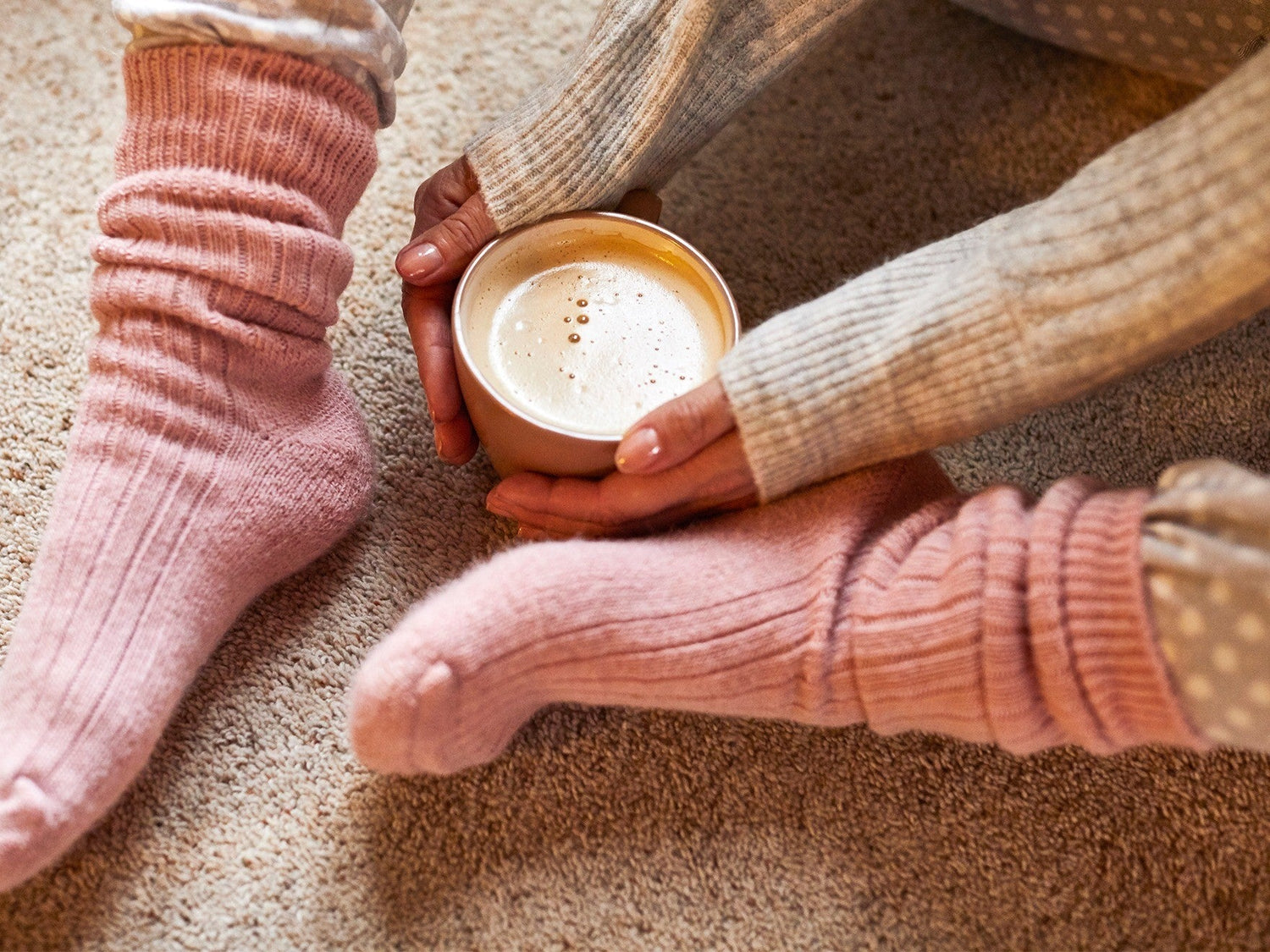Angora Socks Guide: Everything You Need to Know in 2025
Looking for the coziest upgrade to your winter wardrobe? Angora socks are taking center stage in 2025, offering a blend of warmth and luxury that’s tough to beat. In this guide, you’ll discover everything you need to know about angora socks—from their unique properties and health benefits to expert care tips and the latest trends. Curious about what sets them apart from ordinary socks? We’ll break it all down, so you can make confident choices and enjoy unmatched comfort all season. Let’s step into the world of angora and find your perfect pair.
What Are Angora Socks?
Angora socks have captured the attention of comfort seekers and luxury lovers alike. But what exactly sets these socks apart? To truly appreciate their appeal, it’s essential to understand where angora comes from, how these socks are crafted, and why their unique fiber properties make them a favorite for cold-weather wear.
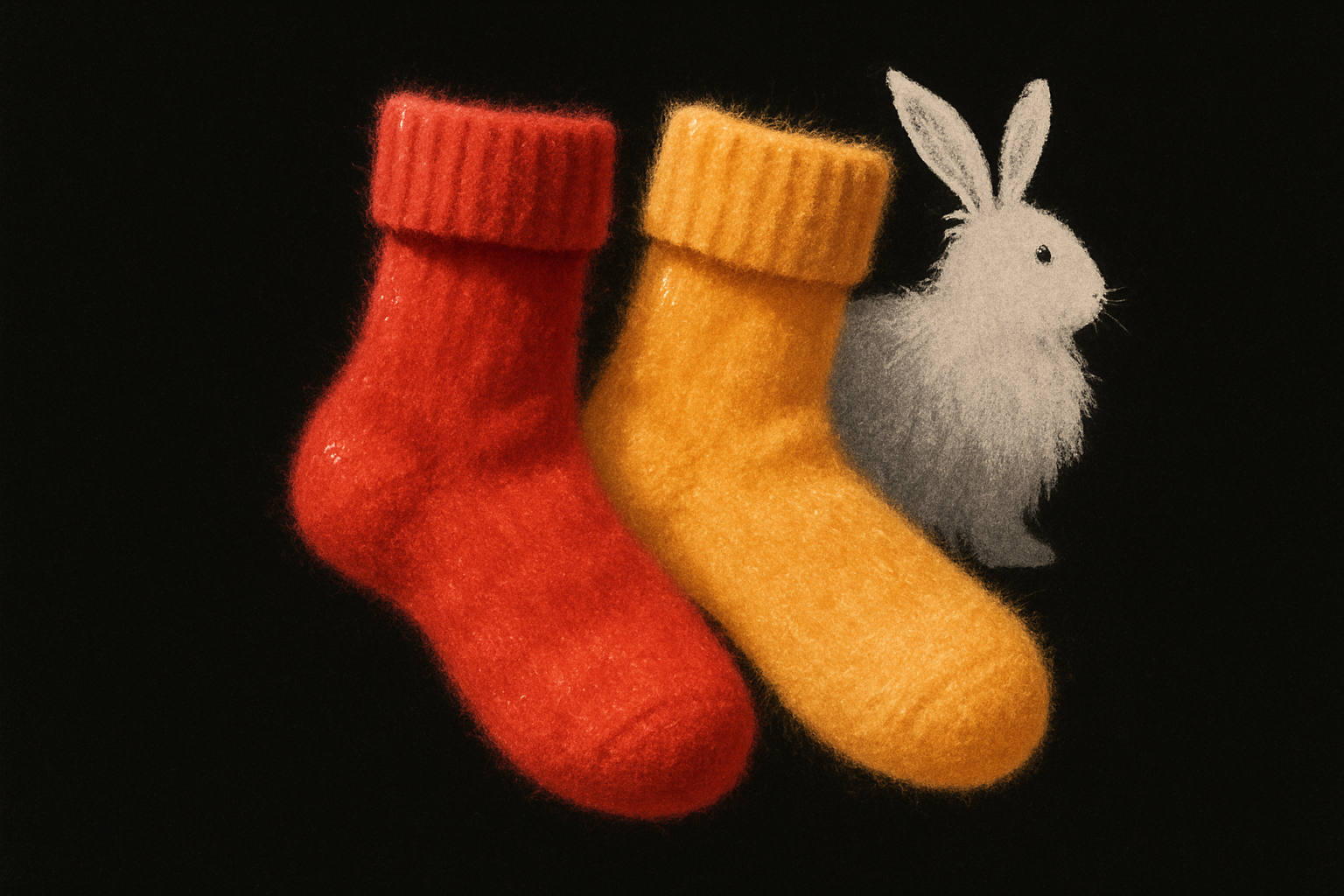
The Origins of Angora Fiber
Angora socks are made using angora fiber, which comes from the Angora rabbit. This fiber should not be confused with mohair, which is sourced from the Angora goat. Angora has been prized for centuries in luxury textiles, not only for its incredible softness but also for its exceptional warmth.
Historically, angora was reserved for high-end garments and accessories due to its rarity and unique qualities. Today, the main producers of angora fiber include China, several European nations, and parts of South America. These regions are known for their expertise in ethical breeding and fiber collection.
Angora fiber is distinct from sheep’s wool and other natural fibers. Its ultra-fine, hollow structure provides insulation that can be up to seven times warmer than traditional wool. This remarkable trait is why angora socks are a staple in premium winter apparel. For those interested in the science behind these properties, you can explore more about Angora fiber properties and production.
How Angora Socks Are Made
The production process of angora socks starts with carefully harvesting the soft undercoat of the Angora rabbit. The fiber is then cleaned, spun, and either used pure or blended with other materials. Pure angora socks offer unmatched softness, but blends—often with wool, nylon, or rayon—are more common to improve durability and elasticity.
Blending ratios vary by brand and style. For example, Tabio’s popular blend includes 44% rayon, 35% nylon, 20% angora, and 1% polyurethane. This mix keeps the socks soft and fluffy while ensuring they hold their shape and withstand daily wear.
Angora socks come in various structures, including crew, knee-high, ankle, and lounge styles. The choice of blend directly affects the sock’s softness, stretch, and longevity. This careful balance is what allows angora socks to stand out in both comfort and durability.
Unique Properties of Angora Fiber
The fiber used in angora socks is renowned for its exceptional warmth and insulation. Thanks to its hollow structure, angora traps heat efficiently, making these socks ideal for freezing temperatures.
Despite their insulating power, angora socks remain incredibly lightweight and soft to the touch. They are often hypoallergenic, making them suitable for sensitive skin. The natural moisture-wicking and breathable qualities help keep feet dry and comfortable throughout the day.
When compared to merino wool, cashmere, or cotton socks, angora socks excel in both comfort and performance, especially in cold climates. Their reputation for softness and warmth makes them a go-to choice for anyone seeking luxurious, cozy footwear during winter months.
Key Benefits of Angora Socks
Looking for the perfect pair of socks to elevate your comfort and warmth this year? Angora socks stand out for their unique blend of luxury, performance, and thoughtful design. Let’s break down the key benefits that make angora socks the go-to choice for anyone who values both coziness and style.
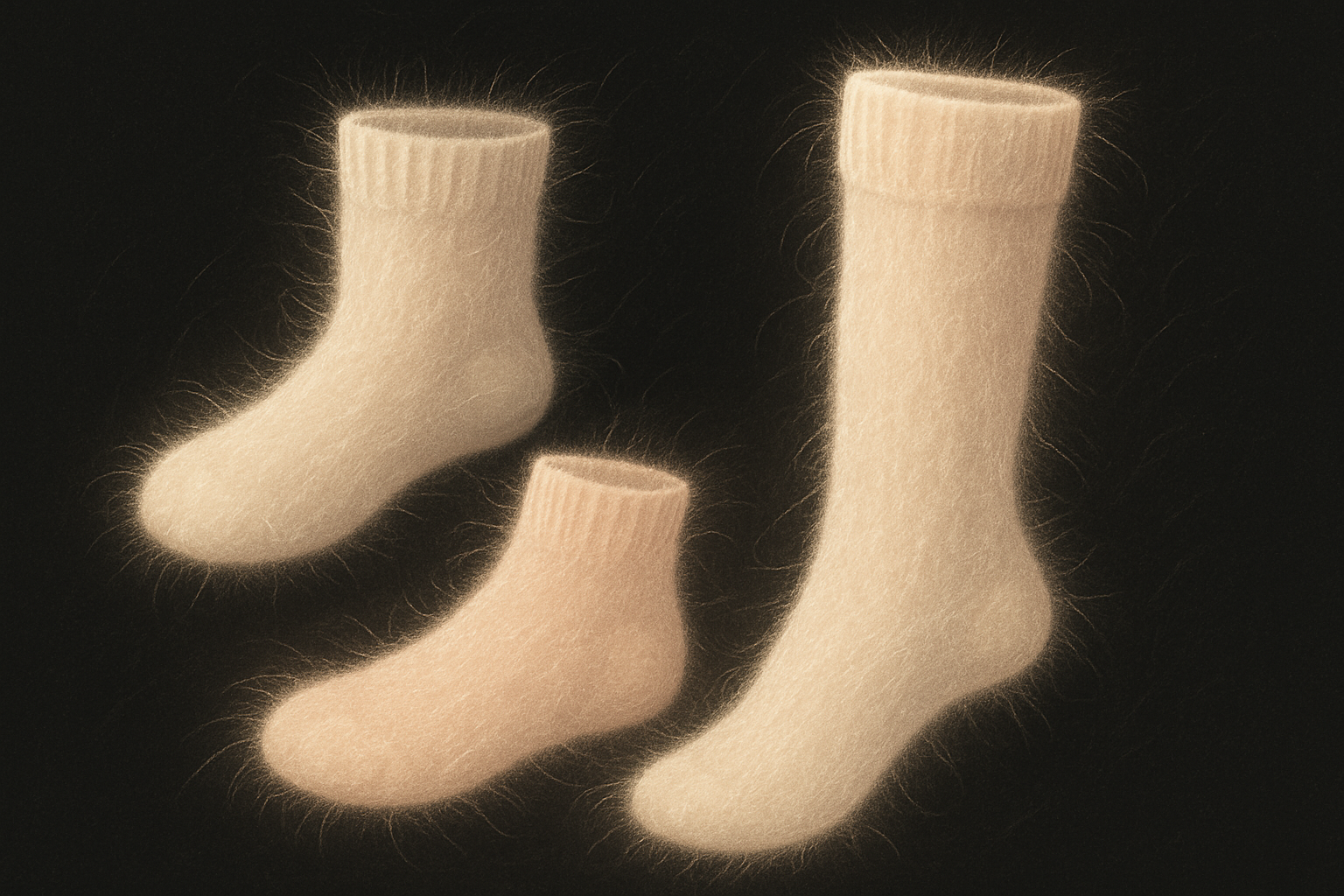
Superior Warmth and Comfort
One of the top reasons people choose angora socks is their exceptional warmth. The hollow structure of angora fibers traps heat far more efficiently than standard wool. This means your feet stay cozy, even on the coldest days.
Angora socks excel during winter walks, outdoor adventures, or simply relaxing at home. Their insulating properties make them ideal for anyone who struggles with cold feet or spends time in chilly environments.
For example, crew-length angora socks are perfect for slipping into boots for a walk in frosty weather or for lounging on the sofa with a good book. The luxurious warmth is instantly noticeable, setting angora socks apart from ordinary options.
Softness and Skin-Friendliness
If you have sensitive skin, you’ll appreciate the ultra-soft touch of angora socks. The fine, silky fibers create a gentle feel that’s often compared to cashmere. Unlike some sheep’s wool, angora is far less likely to cause itching or irritation.
This makes angora socks a popular choice for people with eczema, allergies, or anyone who dislikes the scratchiness of traditional wool. They’re delightfully smooth, making every step feel pampered.
Many who try angora socks for the first time are surprised by just how soothing they are, even for all-day wear. The softness is truly a game changer for comfort seekers.
Lightweight and Breathable
Angora socks offer warmth without unnecessary bulk. The lightweight nature of angora fiber means you can enjoy toasty feet without feeling weighed down.
Breathability is another standout feature. The natural structure of angora allows air to circulate, helping to wick away moisture and keep your feet dry. This reduces the risk of overheating and helps prevent odor, even after hours of wear.
Compared to synthetic socks, angora blends regularly outperform in moisture management. Whether you’re on your feet all day or wearing them overnight, angora socks maintain a comfortable microclimate for your skin.
Style and Versatility
Fashion meets function with angora socks. They’re available in a variety of lengths, from ankle and crew to knee-high and lounge styles. This versatility means there’s a pair for every occasion, whether you’re dressing up or winding down.
Color options range from classic neutrals like ivory and black to vibrant hues such as hot pink or deep blue. Patterned designs are popular, too, especially among those who want to add a playful touch to their wardrobe.
With angora socks, you don’t have to compromise on style for the sake of comfort. They work equally well with boots, sneakers, or as statement pieces with dress shoes.
Durability and Longevity
While angora is prized for its softness, modern blends ensure that angora socks are also built to last. By combining angora with fibers like wool, nylon, or rayon, manufacturers create socks that resist wear and maintain their shape over time.
Reinforced heels and toes are common features, especially in high-quality brands. This extends the lifespan of your socks and provides extra value for your investment.
Japanese-made angora socks are often highlighted for their meticulous craftsmanship and attention to detail. With proper care, a single pair can remain a staple in your drawer for seasons to come.
Health and Wellness Benefits
Warm feet aren’t just about comfort—they can also contribute to better health. Angora socks help improve circulation by keeping your feet consistently warm, which may benefit those with Raynaud’s syndrome, arthritis, or chronic cold feet.
They’re also a favorite as bed socks, promoting relaxation and helping you drift off more easily at night. For a deeper dive into how the right socks can enhance your sleep, check out this guide on Bed Socks for Better Sleep.
Whether you need relief from aching joints, want to boost your overall comfort, or simply crave a better night’s sleep, angora socks offer a gentle, supportive solution.
How to Choose the Right Angora Socks in 2025
Choosing the perfect pair of angora socks in 2025 means balancing comfort, style, and practicality. With so many options available, understanding what sets each pair apart will help you make the best decision for your needs. Let’s break down the key factors to consider.
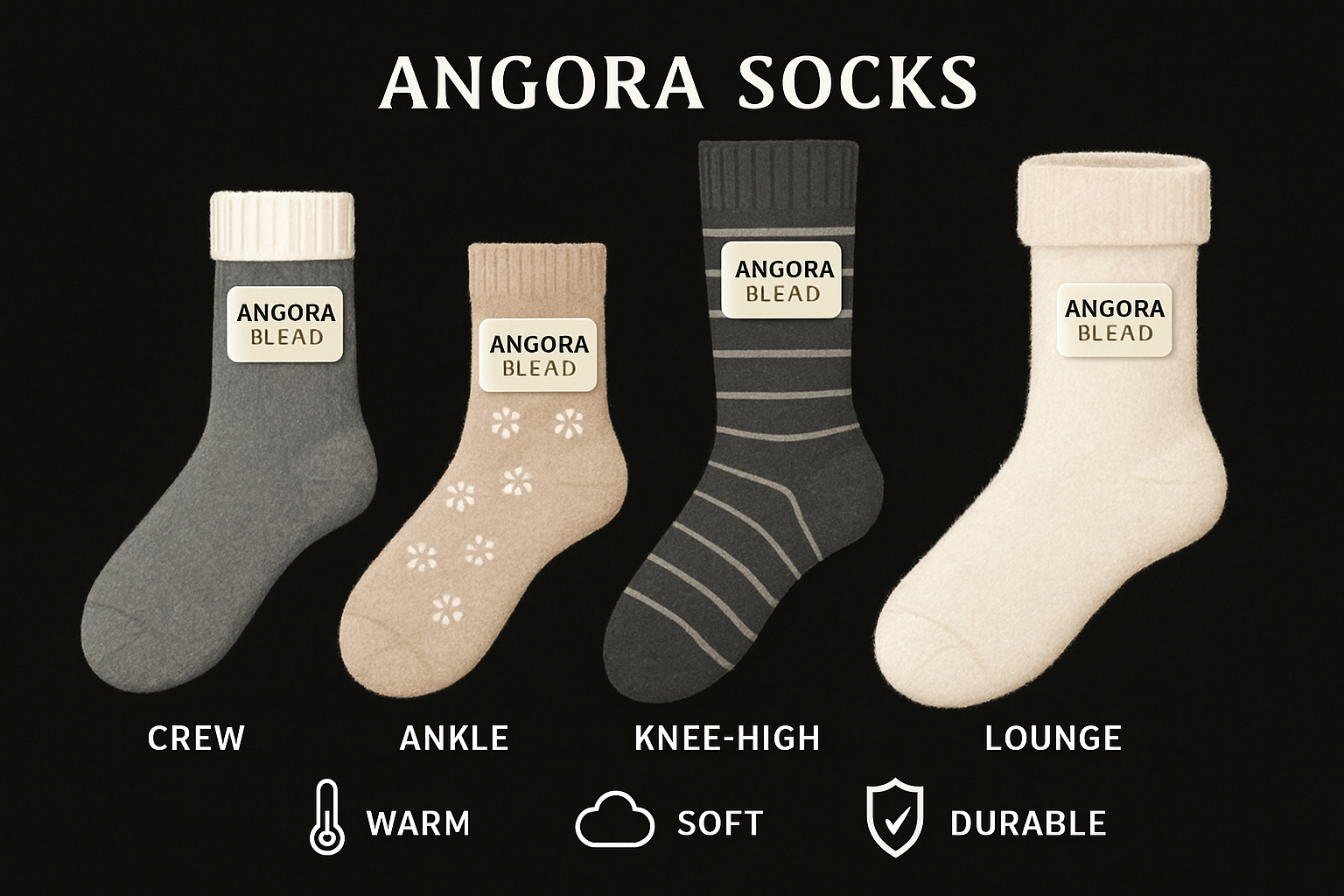
Understanding Blends and Materials
When it comes to angora socks, the blend of fibers determines their feel, warmth, and durability. Pure angora offers unmatched softness and insulation, but blends are more common for everyday wear. You’ll often see angora combined with wool, nylon, or rayon to improve strength and longevity.
Common blend ratios include 20–30% angora for a soft touch without sacrificing structure. For example, a typical mix might be 20% angora, 44% rayon, 35% nylon, and 1% polyurethane. This blend balances luxury and resilience, making angora socks suitable for regular use.
Understanding the manufacturing process adds another layer to your decision. If you’re curious about how natural fiber socks are crafted, including angora blends, check out How Our Socks Are Made for a behind-the-scenes look at traditional and modern techniques.
Sizing and Fit Considerations
Proper fit is crucial for maximizing the benefits of angora socks. Most brands offer standard sizing for men and women, but always check the size chart before purchasing. A snug, but not tight, fit helps trap warmth and ensures all-day comfort.
Look for options with reinforced heels and toes for added durability. For example, some brands offer a 6–9 size range for women, providing a tailored fit that prevents bunching and slipping. Trying on different styles can help you find the perfect pair for your foot shape and wearing habits.
Types and Styles Available
Angora socks come in a variety of types to suit every need. The most popular styles include:
- Crew socks: Ideal for daily wear and casual looks.
- Ankle socks: Great for warmer months or low-cut shoes.
- Knee-high socks: Perfect for winter boots or extra warmth.
- Lounge socks: Designed for relaxing at home.
Specialty options such as toe socks, dress socks, and anti-odor variants are also available. Crew socks are a versatile choice, while knee-highs provide maximum insulation during cold weather.
Color and Design Choices
Express your personality with the wide range of colors and designs available for angora socks. Classic neutrals like ivory, grey, and black remain timeless, while seasonal shades—think vintage purple or hot pink—add a pop of fun to your wardrobe.
Patterned socks, including stripes, polka dots, and Japanese pop designs, appeal to fashion-forward shoppers. Whether you prefer understated elegance or bold statements, there’s an angora sock to match your style.
Price Range and Value
Angora socks are available in a range of price points, from budget-friendly picks to premium, handcrafted options. Typically, you can expect to pay between $8.99 and $33.00 per pair, depending on the blend, craftsmanship, and brand.
Mid-range options, such as Tabio’s angora crew socks at $25.00, offer a balance of quality and affordability. Premium pairs may feature unique designs, reinforced details, or limited-edition colors, making them worth the investment for daily comfort and style.
Where to Buy Angora Socks
Finding the right angora socks is easier than ever in 2025. Shop online at specialty retailers, major marketplaces, or directly from brands known for quality and ethical sourcing. In-store options include department stores and boutique shops, where you can feel the texture and try on different styles.
Always consider shipping costs, return policies, and customer service when making your purchase. Reading reviews and comparing brands will help you choose the best angora socks for your needs and budget.
Caring for Angora Socks: Maintenance and Longevity
Keeping your angora socks in top condition is easier than you might think. With a few simple care habits, you’ll ensure they stay soft, warm, and luxurious for years to come. Let’s break down the best ways to wash, dry, store, and maintain your angora socks so they last through many cozy seasons.
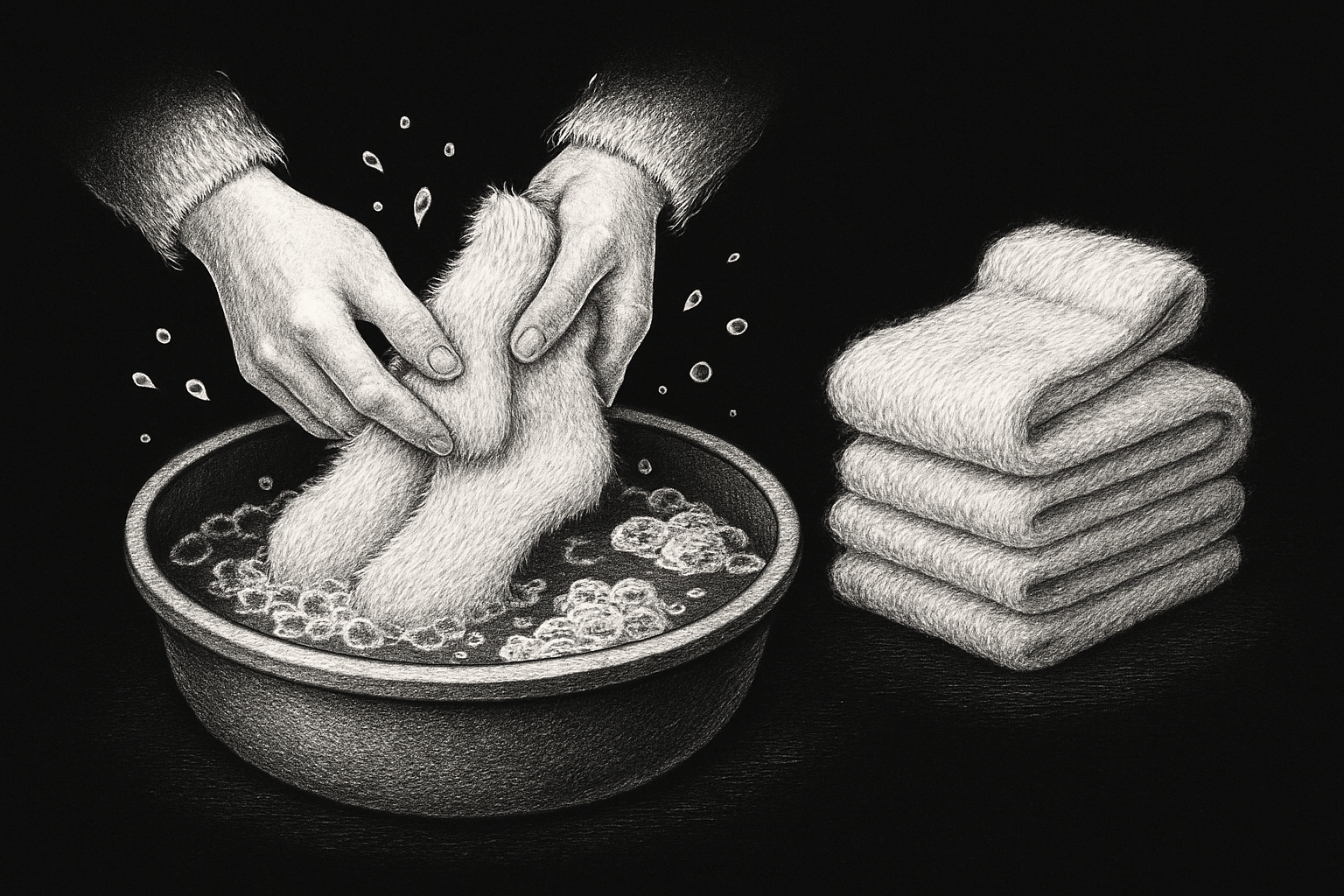
Washing and Drying Best Practices
Hand-washing is the gold standard for caring for angora socks. Use cold water and a mild detergent to preserve the delicate fibers. Gently swirl the socks in water—never wring or twist them, as this can stretch or damage the angora fibers.
If you must machine wash, place your angora socks in a mesh laundry bag and use the gentle cycle with cold water. Avoid bleach or harsh chemicals, as these can strip the natural softness. For more detailed tips, check out this guide on Caring for Natural Fibre Socks.
Drying and Storage Tips
After washing, gently squeeze out excess water without twisting the socks. Lay your angora socks flat on a clean towel and reshape them to their original form. Air-drying is best—keep them away from direct heat sources like radiators or tumble dryers, which can shrink or damage the fibers.
When storing, keep your angora socks in a cool, dry place. Avoid cramming them into tight drawers to prevent creases. If you have cedar balls or sachets, they can help deter moths and keep your socks fresh.
Dealing with Pilling and Shedding
New angora socks may shed a bit of fluff at first—this is normal and will subside after a few wears and washes. To minimize pilling, turn the socks inside out before washing and avoid friction against rough surfaces.
If pilling does occur, use a fabric comb or a gentle sweater brush to remove the little balls without pulling on the fabric. Keeping your angora socks clean and cared for will reduce shedding over time.
Repair and Longevity Tips
With proper care, angora socks can last for several seasons. Check the heels and toes regularly for signs of thinning or holes. If you notice wear, reinforce these areas with a simple darning stitch to extend their life.
Consider rotating your angora socks with other pairs so no single set gets overused. When they do finally wear out, repurpose them as soft dusting cloths or cozy bed socks.
Frequency of Washing
Unlike synthetic socks, angora socks don’t need to be washed after every wear. In most cases, washing after two to three wears is sufficient—unless they become visibly soiled. This gentle approach preserves the natural oils in the fiber and keeps the socks feeling soft.
Frequent washing can cause unnecessary wear, so air them out between uses. With these habits, your angora socks will maintain their warmth, comfort, and beauty for the long haul.
Ethical and Sustainability Considerations
Choosing angora socks in 2025 means considering not just comfort, but also the ethical and environmental footprint of your purchase. As awareness grows, many shoppers want to ensure their angora socks align with their values. Let’s break down what you need to know for responsible, sustainable sock shopping.
Animal Welfare in Angora Production
Animal welfare is a central concern for angora socks. Angora fiber comes from rabbits, and how these animals are treated matters deeply. Ethical farms prioritize humane care, providing rabbits with space, gentle handling, and stress-free environments. Sadly, not all producers follow these practices. Some use harmful methods, which has led to controversy and calls for stricter oversight.
Consumers are encouraged to look for brands that are transparent about their sourcing and follow high welfare standards. For a deeper dive into animal welfare issues and industry improvements, see this guide on ethical considerations in Angora wool production. Choosing angora socks from certified, responsible sources helps support positive change.
Environmental Impact of Angora Fiber
Angora socks have a smaller environmental footprint than many synthetic alternatives. Angora fiber is biodegradable and renewable, making it a greener option. However, environmental impact can vary depending on farming practices, use of chemicals, and energy involved in processing.
Blending angora with other natural fibers, such as wool, can reduce the need for synthetics and enhance eco-friendliness. Compared to polyester or acrylic socks, angora socks break down naturally and don’t contribute to microplastic pollution. Always check for brands that highlight sustainable sourcing and minimal chemical use.
Certifications and Labels to Look For
When shopping for angora socks, check for recognized certifications that ensure ethical and sustainable practices. The Responsible Angora Standard (RAS) is one such label, verifying humane treatment and environmentally conscious production. Some European and Japanese brands are known for strict animal welfare and transparency.
Other certifications to consider include OEKO-TEX and organic certifications, which focus on chemical safety and eco-friendly processes. Brands displaying these labels are more likely to meet high standards for both the animals and the planet.
Table: Key Certifications for Angora Socks
| Certification | Focus Area |
|---|---|
| Responsible Angora Standard (RAS) | Animal welfare, sustainability |
| OEKO-TEX | Chemical safety |
| Organic | Eco-friendly farming |
Alternatives for Ethical Consumers
Not all shoppers are comfortable with animal-based products, even when ethically sourced. Luckily, there are alternatives to angora socks. Materials like alpaca, merino wool, bamboo, and cashmere offer warmth and softness without angora. Vegan and cruelty-free socks made from plant-based fibers are also gaining popularity.
For those who want to avoid animal products entirely, look for socks labeled as vegan or made from recycled materials. The Cambridge Sock Company, for example, offers premium natural fiber socks in alpaca and merino blends for conscious consumers.
Consumer Responsibility
As a consumer, your choices have power. Researching brands, reading about their sourcing, and supporting transparent companies can drive industry change. Look for detailed information about animal care, environmental policies, and certifications before buying angora socks.
Brands that openly share their supply chain and sustainability efforts are often the most trustworthy. For more tips on making thoughtful, eco-conscious purchases, visit this guide on ethical and sustainable socks. By choosing wisely, you help ensure that angora socks remain a cozy, responsible choice for years to come.
Trends and Innovations in Angora Socks for 2025
The world of angora socks is evolving rapidly in 2025, bringing together fresh materials, modern design, and a strong focus on comfort and sustainability. Whether you’re a longtime fan or new to the luxurious warmth of angora socks, there’s plenty to get excited about this year.
New Blends and Fiber Technologies
Innovation is at the heart of angora socks in 2025. Brands are creating new blends that combine angora with fibers like recycled nylon, rayon, and merino wool for better durability and enhanced warmth. These performance blends not only extend the lifespan of your favorite socks but also keep them soft and lightweight.
Manufacturers are also experimenting with recycled materials, reducing environmental impact without sacrificing comfort. If you’re curious about what makes angora fibers so unique, check out this excellent overview of angora wool characteristics and uses.
Fashion and Design Trends
Style is a big story for angora socks this year. Expect to see bold, geometric patterns, bright pops of color, and even metallic threads woven into classic neutrals. Gender-neutral and unisex designs are gaining traction, making it easier for everyone to enjoy these luxurious socks.
Seasonal collections are also popular, featuring limited-edition shades and creative prints for those who want to make a statement. Whether you prefer understated elegance or attention-grabbing flair, there’s an angora sock style for you.
Functional Advancements
Functionality is front and center in 2025. Angora socks now feature advanced anti-odor and moisture-wicking technologies, keeping your feet dry and fresh all day. Socks are thinner yet warmer, perfect for layering in boots or wearing around the house.
Some brands have added plush cushioning and seamless construction, ensuring comfort with every step. With these improvements, angora socks are now a top choice for both everyday wear and active lifestyles.
Market Expansion and Accessibility
Angora socks are more accessible than ever. Mainstream retailers like Walmart are expanding their selections, offering more sizes and multipack options for families. You’ll find choices for men, women, and children, plus inclusive sizing that ensures a great fit for all.
Boutique brands and online shops are also releasing exclusive designs and collaborations. This wider availability means it’s easier than ever to find angora socks that match your needs and personal style.
Sustainability and Transparency
Sustainability is a driving force in the angora socks market. Brands are emphasizing ethical sourcing, eco-friendly packaging, and transparent supply chains. More companies are openly sharing their animal welfare and environmental policies.
If you’re interested in how angora wool is harvested and its impact on the planet, learn more about angora wool harvesting methods and responsible production practices. In 2025, consumers can confidently choose angora socks that align with their values and support a greener future.
